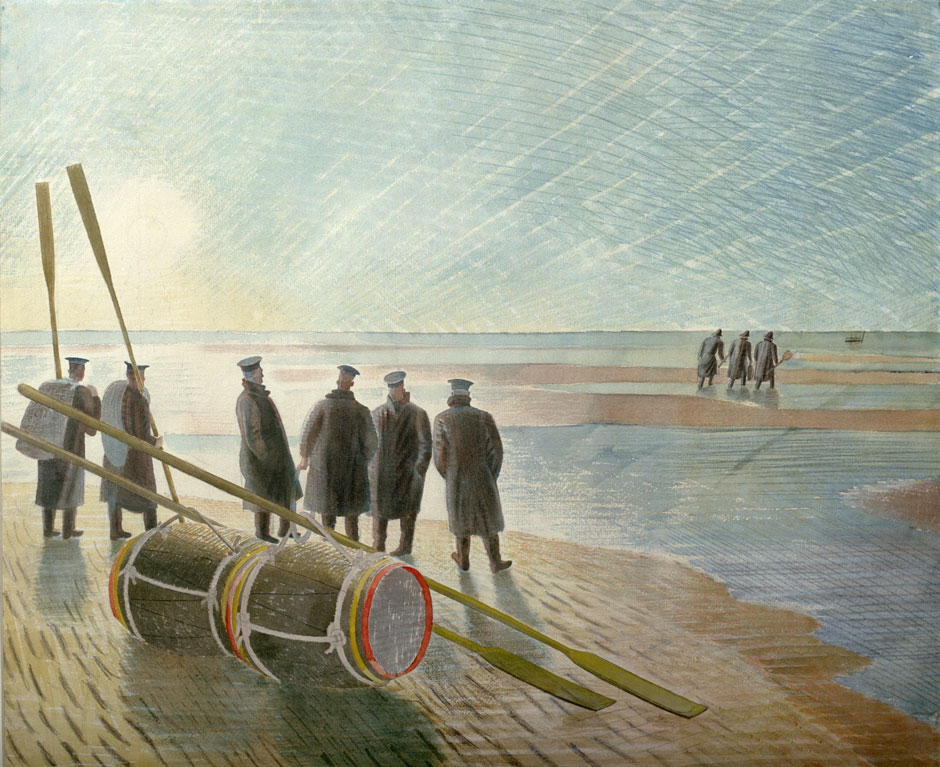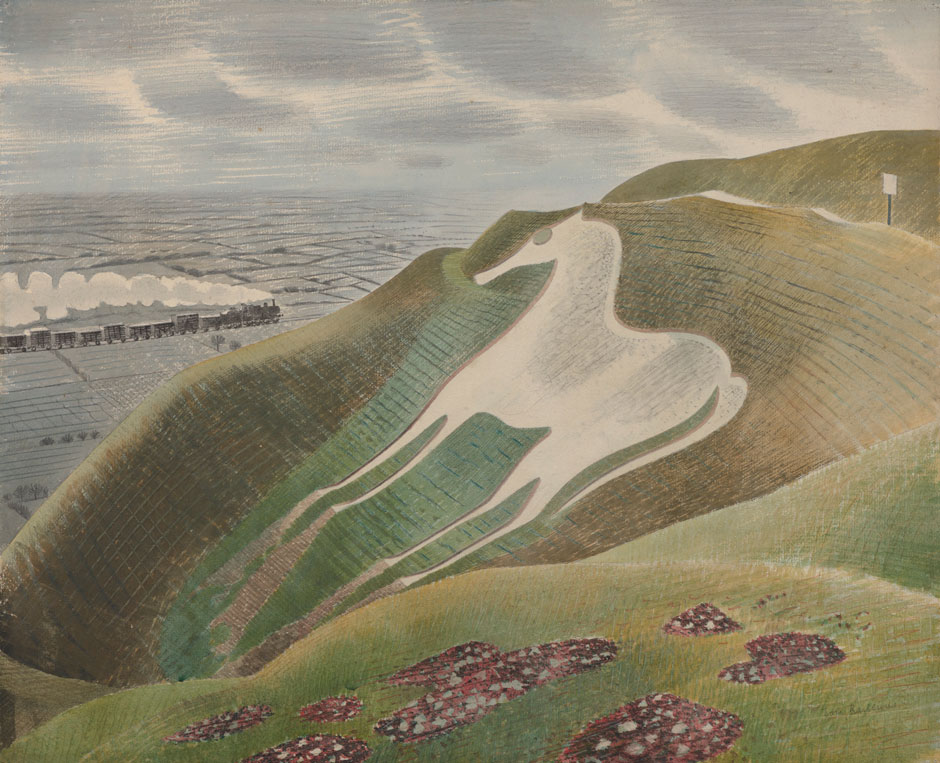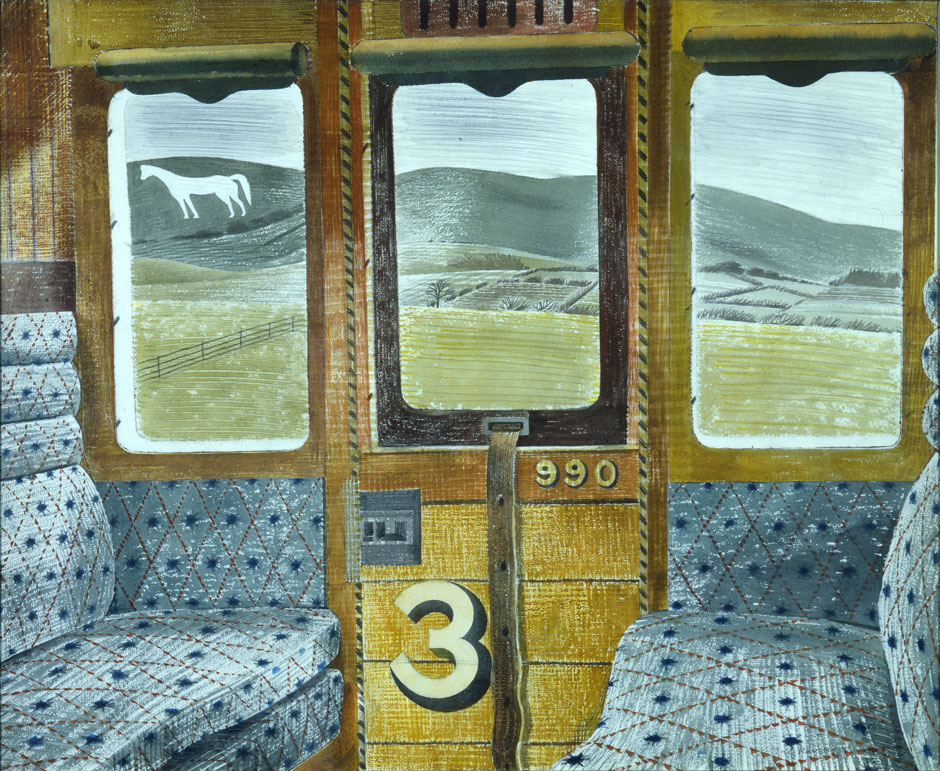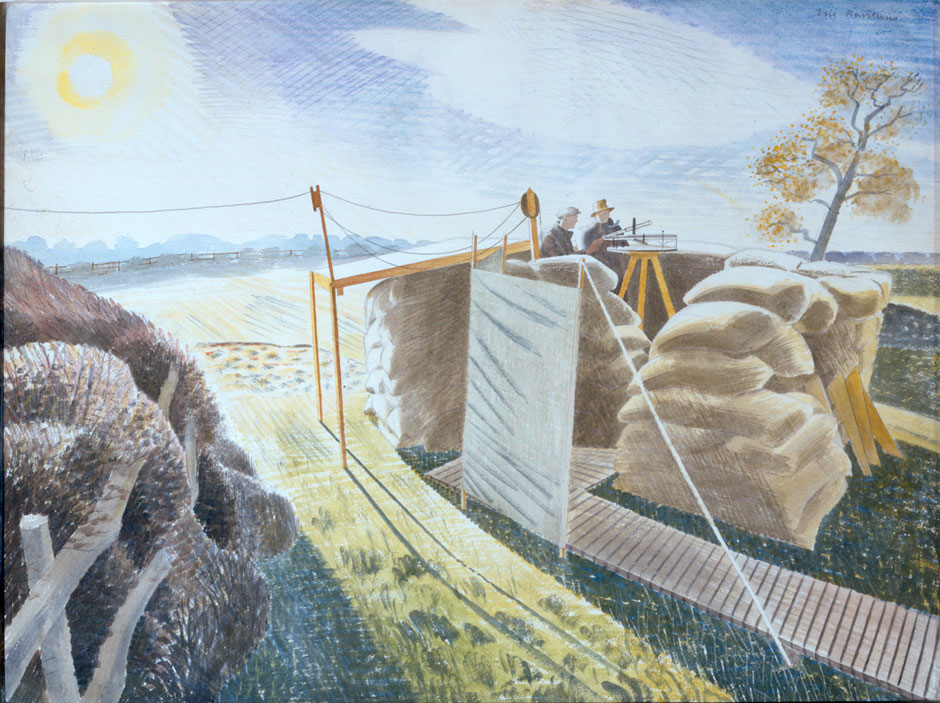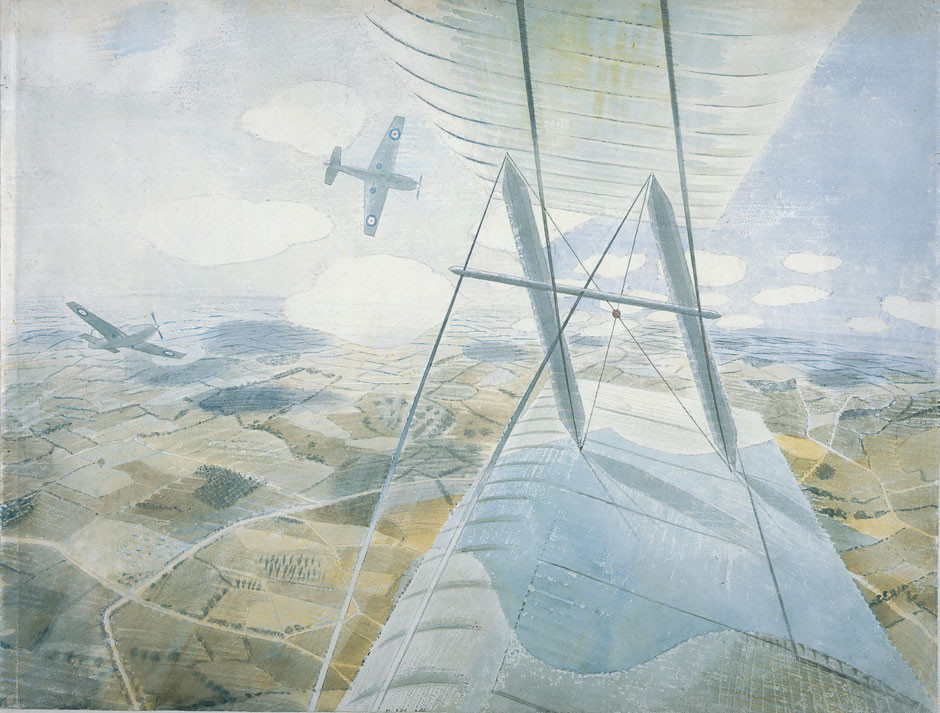Summer in the city. I’m heading to the Dulwich Picture Gallery to see an exhibition of the work of Eric Ravilious, who, though little known abroad, is one of the most distinctive British artists of the 1930s and 1940s. The subject of the show is his rhythmic, poetic watercolors—of the downs, with their strange chalk figures, fishing boats drawn up on a beach, farmhouse bedrooms and wartime defences—which have been billed as “quintessentially English.” Hauntingly lovely, they rouse nostalgia for a world most of us never knew. In fact this is a double trip today since the Dulwich is also called “very English.” But what does that mean?
Dulwich first. The number 59 bus trundles over Waterloo Bridge into dusty, dirty South London. At each stop the people getting on and off reflect the cultural diversity of these inner, village-like suburbs, from Kennington, where you can just hear the crowds cheering cricket at the Oval, to Brixton with its West Indian heritage, old market, and new gentrification. Here I change to the little P4 bus, crawling under railway arches and up the hill, with the wide view over the city behind. After the urban grit, Dulwich feels like a set for a film about traditional England, peaceful, quiet, solidly middle-class. Someone said to me recently “it’s as if it had been left behind.”
But the gallery, warmly and wittily curated, with its fine display of old masters—Rubens and Rembrandt, Canaletto and Murillo, Poussin and Watteau, and lovely Gainsborough—is no backwater. Nor is it truly “English”; we owe its existence to immigrants, as we do so much of our culture. The world’s first purpose-built public art museum, it was founded in 1811 by the bequest of Sir Francis Bourgeois, Swiss art dealer, gentleman, and Fellow of the Royal Academy. In 1795, when Stanislaus, King of Poland, lost his kingdom during the French wars, Bourgeois and his partner Noël Desenfans were left the art collection they had gathered for him, and this was eventually bequeathed to Dulwich College, a private school, for the “inspection of the public.” Bourgeois’s friend Sir John Soane designed the regency building in yellow-brown London brick, and made it both a gallery and a mausoleum. Bourgeois, Desenfans, and his wife Margaret lie here still on one side of the red-walled gallery, in a little rotunda with fake marble columns.
The Ravilious exhibition shares the gallery’s strangeness, unsettling the “quintessentially English” label. Born in 1903, Ravilious grew up in Eastbourne on the Channel coast, with the rolling South Downs behind. His parents ran an antique shop, which may partly account for the fascination with odd objects that marks his art. After studying under Paul Nash at the Royal College of Art, he established himself as a highly original wood-engraver, book illustrator and designer. But throughout the 1920s, often with his friend Eric Bawden, he experimented with watercolor. He could be seen as a descendant of the great eighteenth-century English watercolorists—Cozens, Cotman, and Towne—and of pastoral artists like Samuel Palmer. Yet he is also slightly at odds with the past.
He has been called a Romantic Modernist, and his sensibility belongs to a particular English fascination with form, a line that includes the sculptors Henry Moore and Barbara Hepworth, and the radical architects of the Architectural Review, as well as Paul Nash, John Piper and Graham Sutherland. Realist though they are, his paintings move towards dislocation, even abstraction, conjuring both past and present. They are full of unexpected angles, transformations, and juxtapositions. Doors open onto emptiness, the ordinary jostles the mythic; we meet chalk giants, shooting stars, unearthly, shimmering lights.
In Train Landscape, 1940, the swooping downs with the white horse are glimpsed through the windows of the empty carriage, its door marked with mystical nines and threes. A ruler-straight fence marches across a field and disappears. Inside the carriage the intricately patterned upholstery dips, as if someone has just left. And while the tilt of the door implies a rocking train and a scene rushing past, everything is held still, as in memory.
In many of Ravilious’s scenes, as in this empty carriage, the actors are not people but machines and objects: carts and cars and caravans, trains and planes and ships, beds and chairs, jugs and bowls and clocks, each with its peculiar character. Often they provoke questions. A roller cuts upward against barren downs. Who left it there? A car nears a crossroads, but which way will it go? A train thunders across a road bridge at night, its destination unknown. Ravilious’s signature is immediately recognizable in these enigmatic works with their formal beauty and their pale yet brilliant light, and from his style, distinctively his own. He translates white-line engraving to watercolor, using dry brush work and letting the paper speak: a blank signpost, a scumbled patch of earth. Lines and dots deepen shadows or speak of slanting rain and scattering snow. Barbed wire is at once delicate and threatening; serpentine rivers fan through an estuary. The effect is like music: a song of lines in a ploughed field, a dance of ripples in the sand, a chorus of geraniums in a greenhouse.
Advertisement
His own life with his wife, the painter Tirzah Garwood, was complicated by affairs, yet Ravilious was universally known as a happy man who loved dancing, singing, whistling; and his landscapes, too, feel serene and joyful. You can sense, for example, the tranquility and freedom that he found at Furlongs, the Sussex cottage of his friend Peggy Angus, with the light spilling in from the fields. This calm endures even in the works he completed after he became an official War Artist in 1939. He was initially appointed to serve with the Royal Navy and traveled around to record scenes at British ports, at one stage joining a flotilla sent to capture and evacuate the Norwegian port of Narvik. Later he transferred to the Royal Air Force, stationed at different air-bases in England and Scotland. But his war was often more of waiting than action.
In Observer’s Post, 1939, the men behind the sandbags with their instruments could be taken for naturalists, watching birds and changing skies from a hide behind bales of hay. In Dangerous Work at Low Tide, 1940, the concentration of the bomb-disposal men in their sou’westers, hunting for a mine, evokes thoughts of fishermen checking shorelines at the ebb. But some scenes of guns and coastal defenses, looming warships and bulbous submarines, make the war more darkly, dramatically present, especially when he travels north. In Norway, 1940, sea and sky glitter around the jagged silhouettes of ships. When he was based in Scotland, he produced his paintings of the Firth of Forth and the Orkney anchorage of Scapa Flow that feel both quiet and full of threat. And his silvery dawn scenes of iced-up planes bring home the danger, matched and countered by the exhilaration of flight, caught in the undulating aerial patchwork of Hurricane in Flight, 1942.
In August 1942, Ravilious was posted to Iceland. On September 2 he set off with an air-sea rescue mission, and never returned. A sudden, juddering stop, leaving his light-filled images as a shimmering afterlife. The adjective “English” applies to much of Ravilious’s subject matter and his affiliations, but not to his style or atmosphere. Like the gallery that houses this exhibition, the appeal of his work is universal.
“Ravilious” is on view at the Dulwich Picture Gallery in London through August 31.

